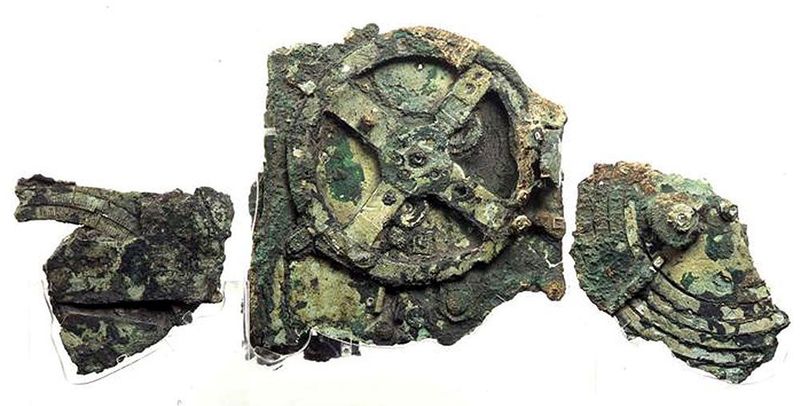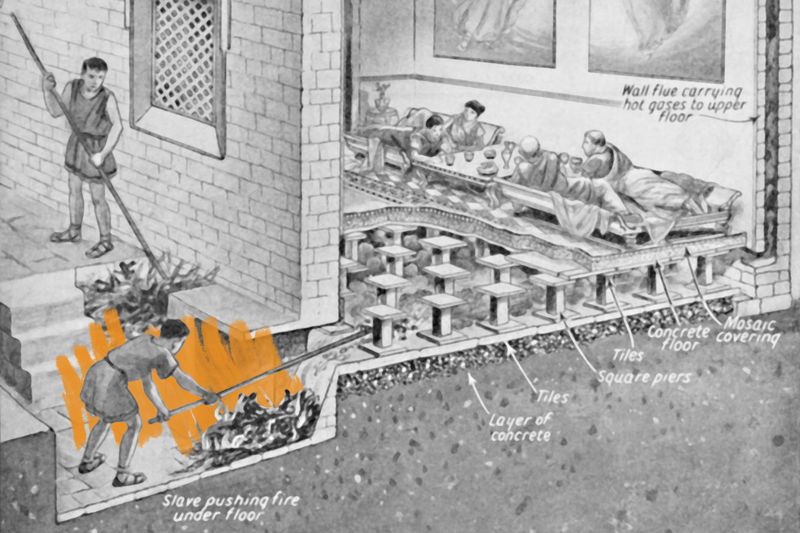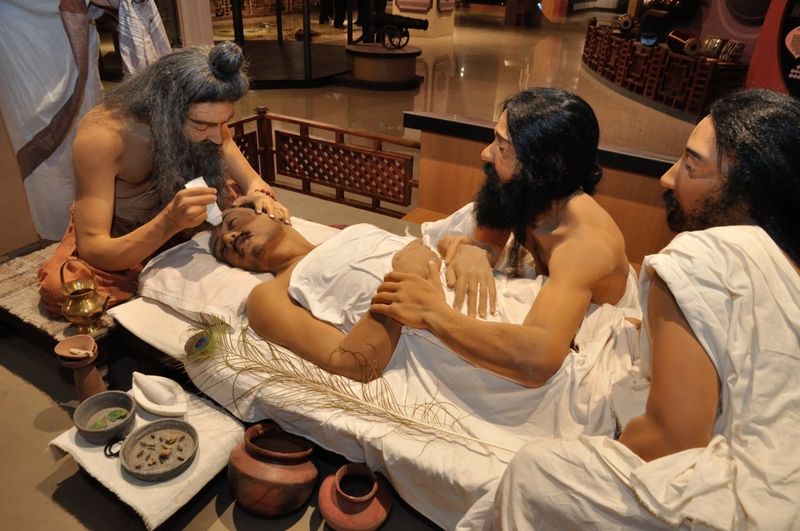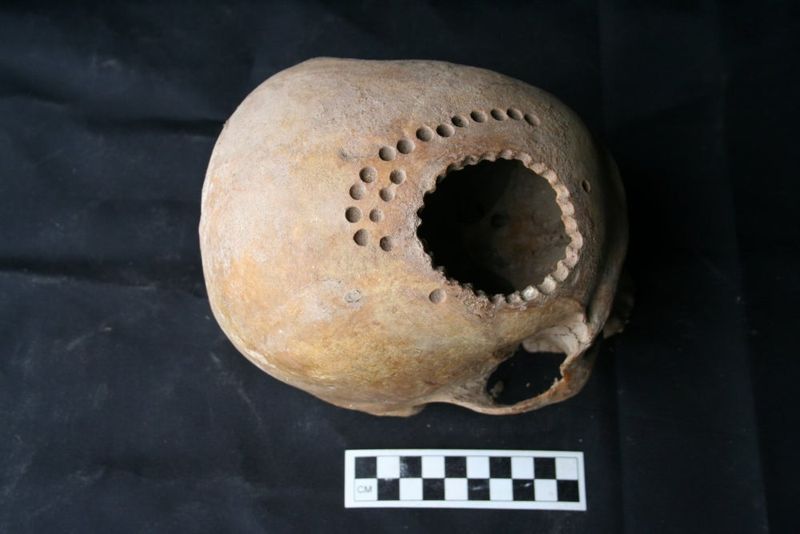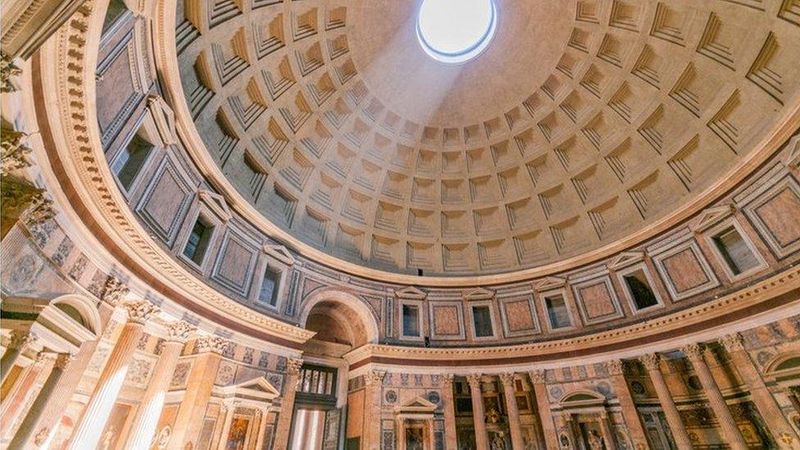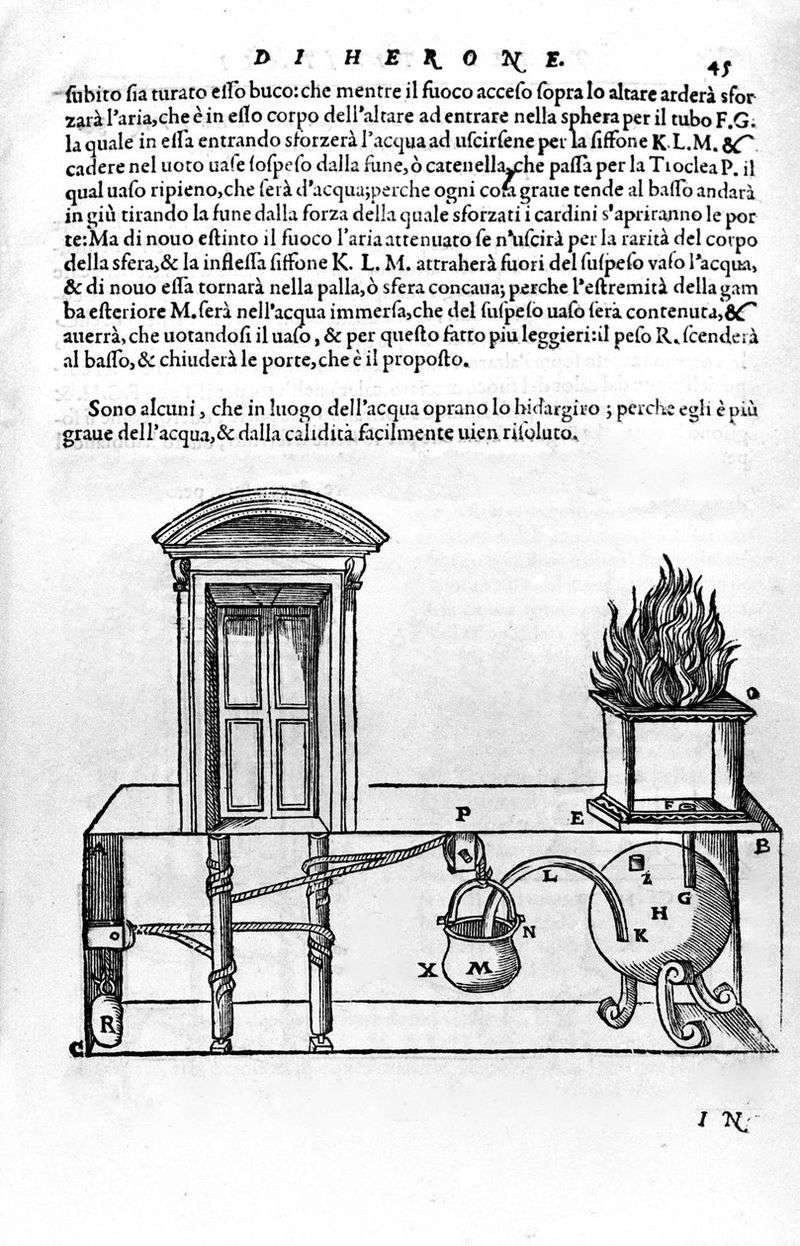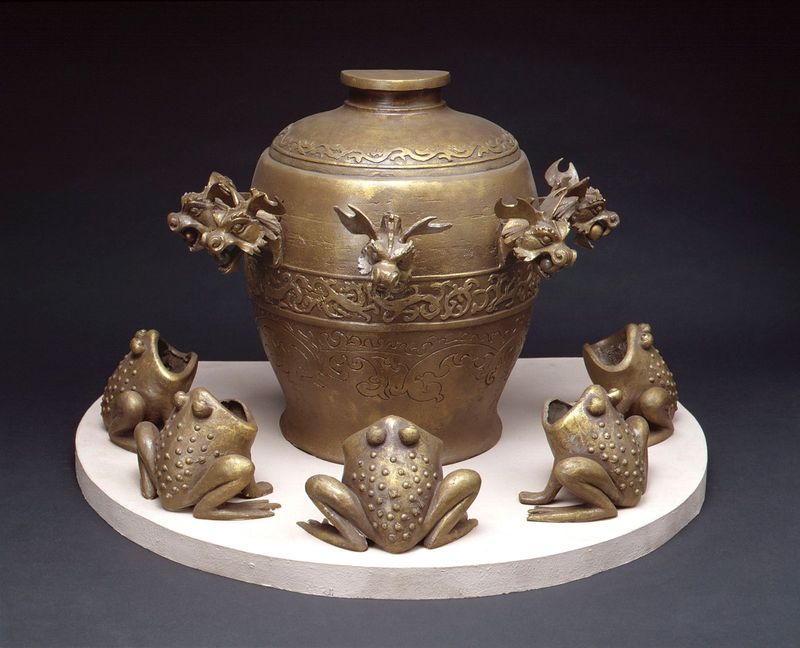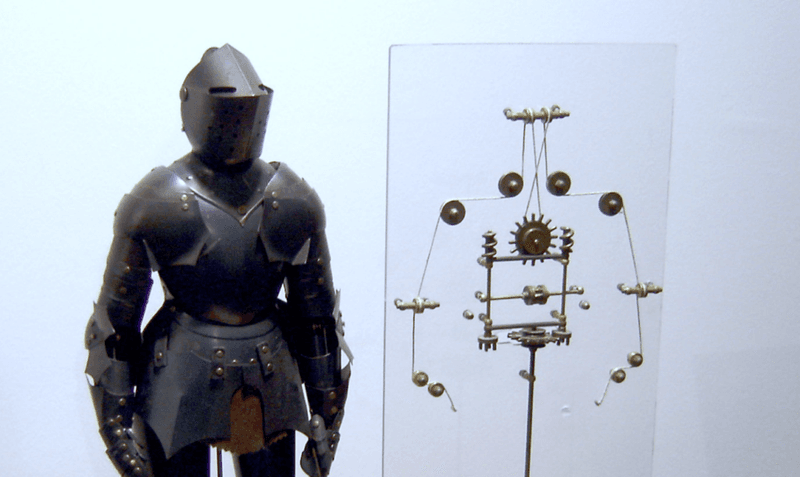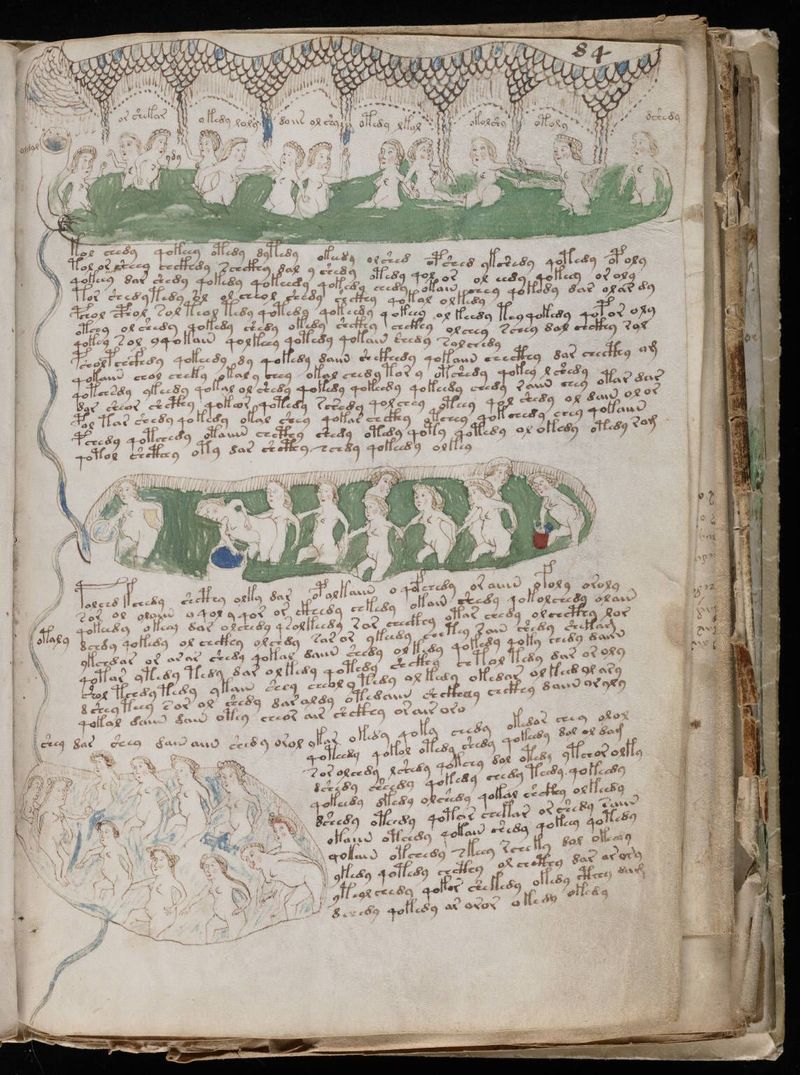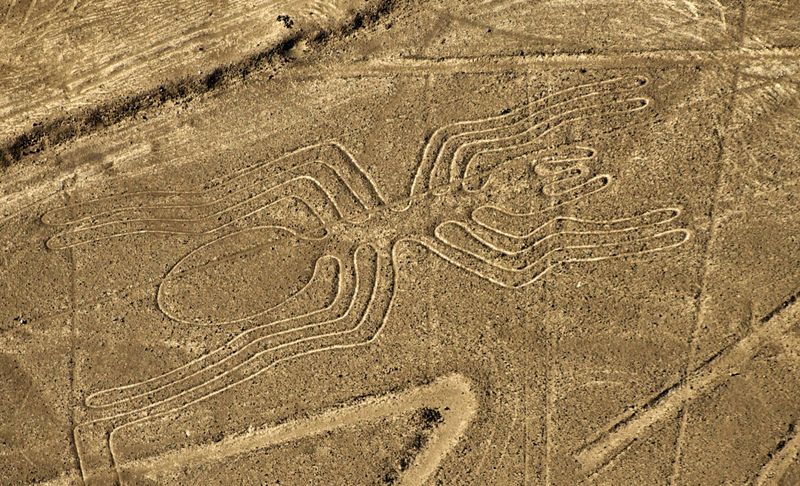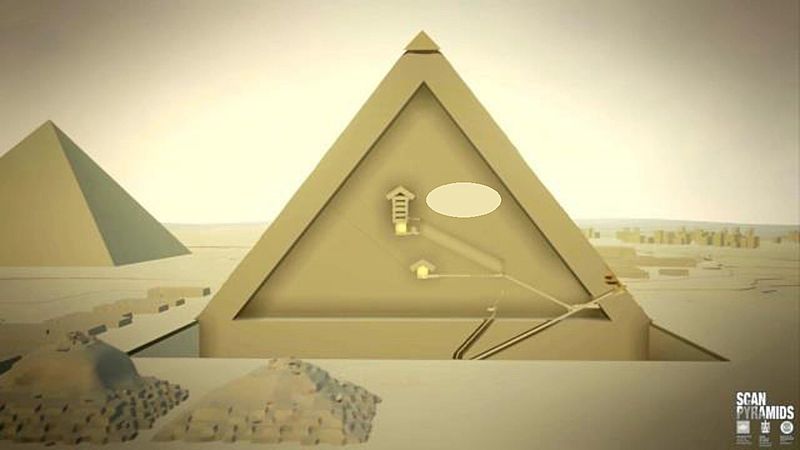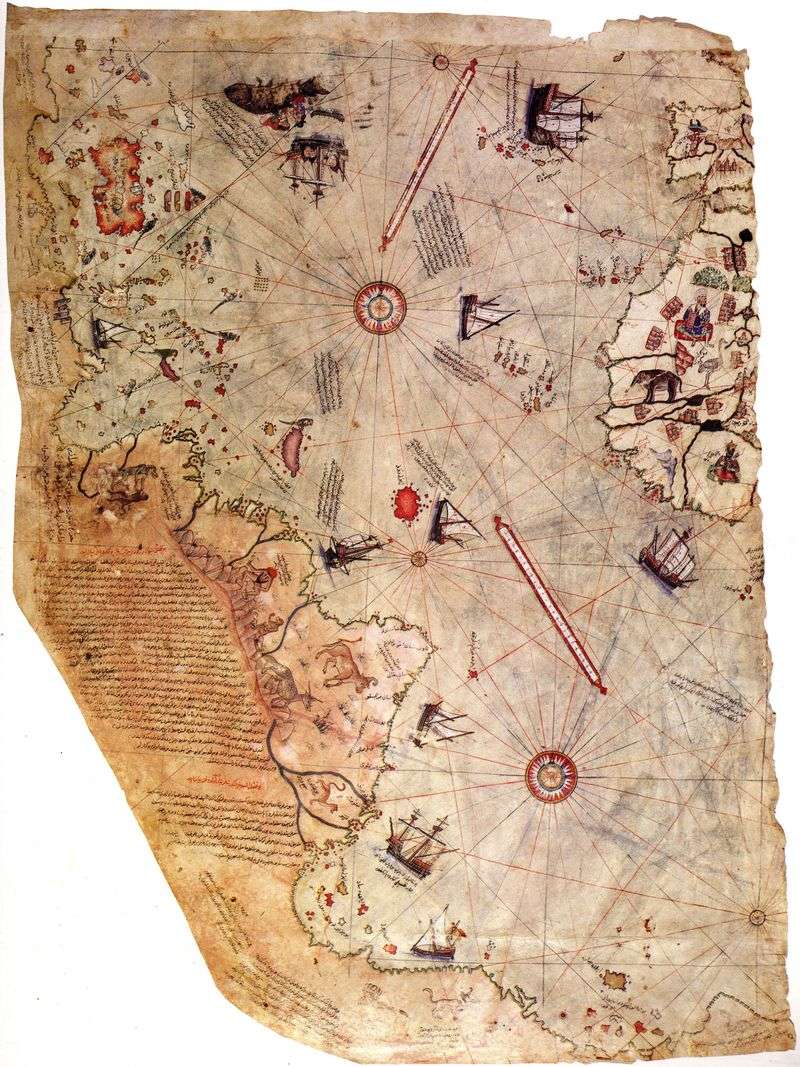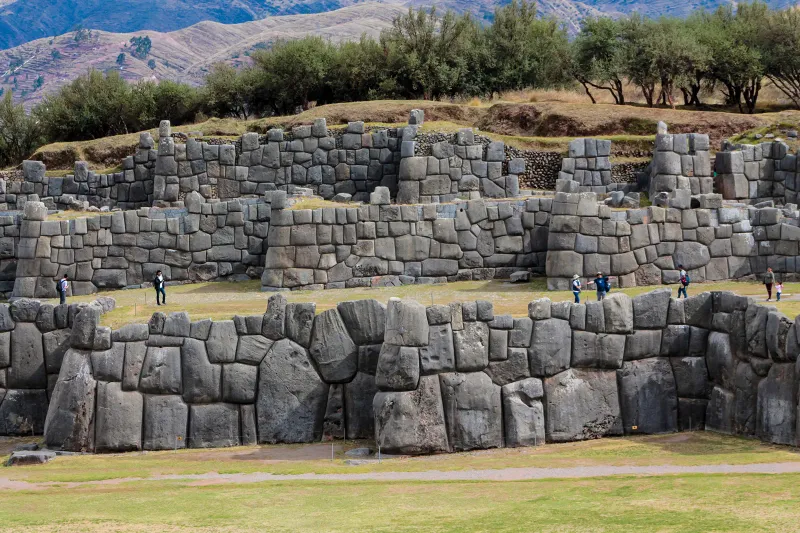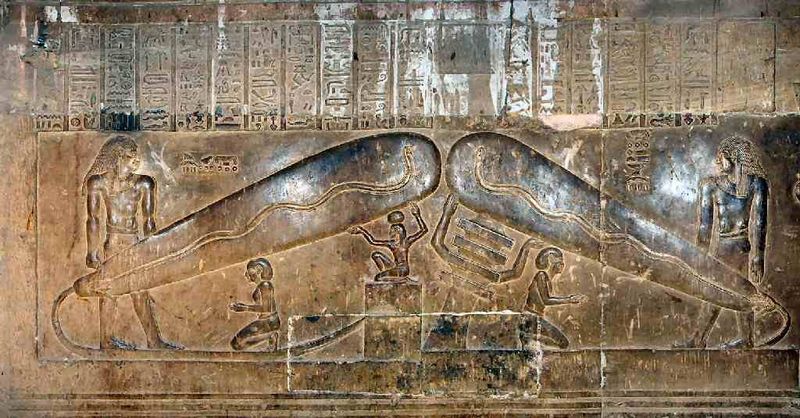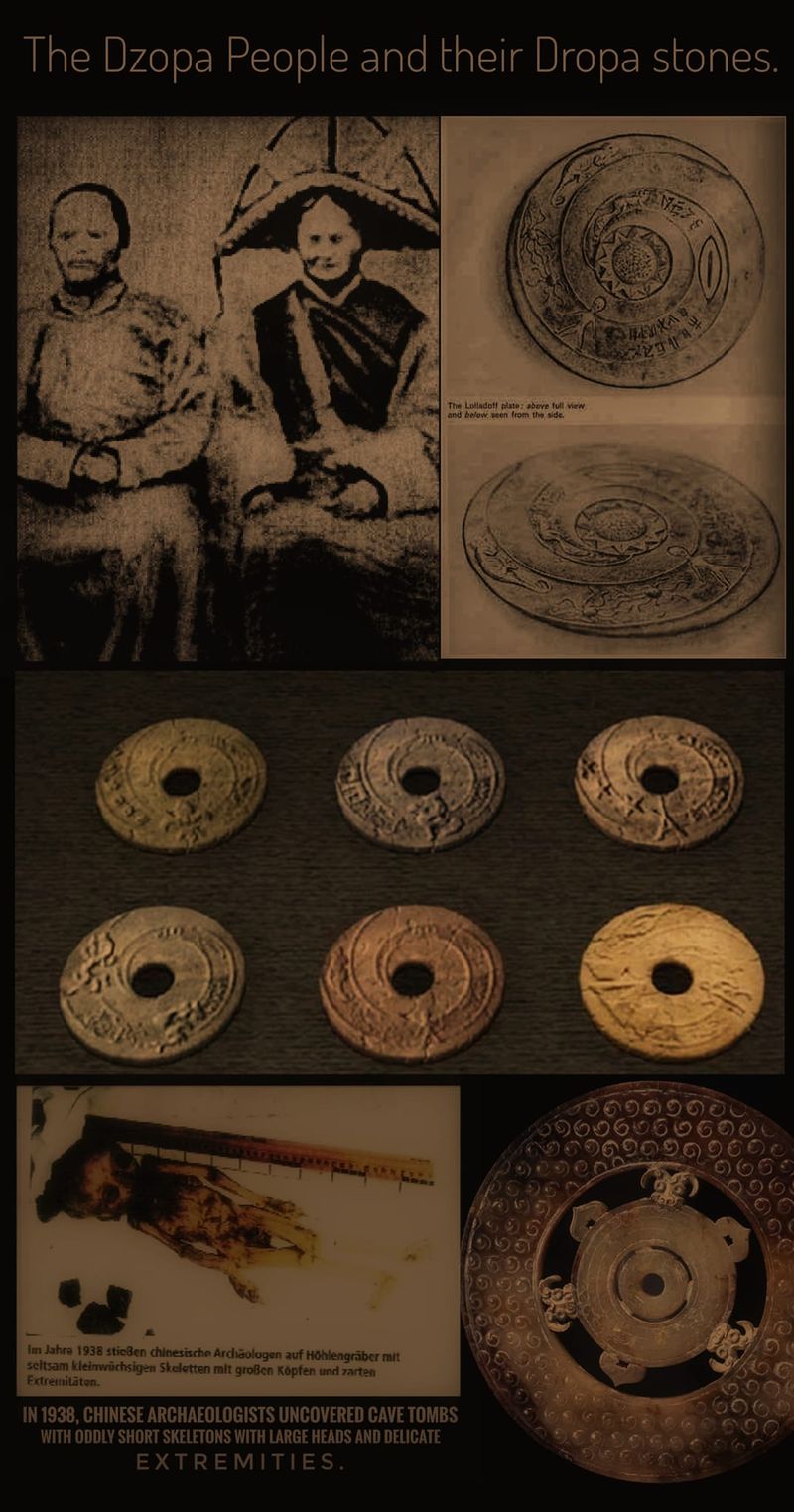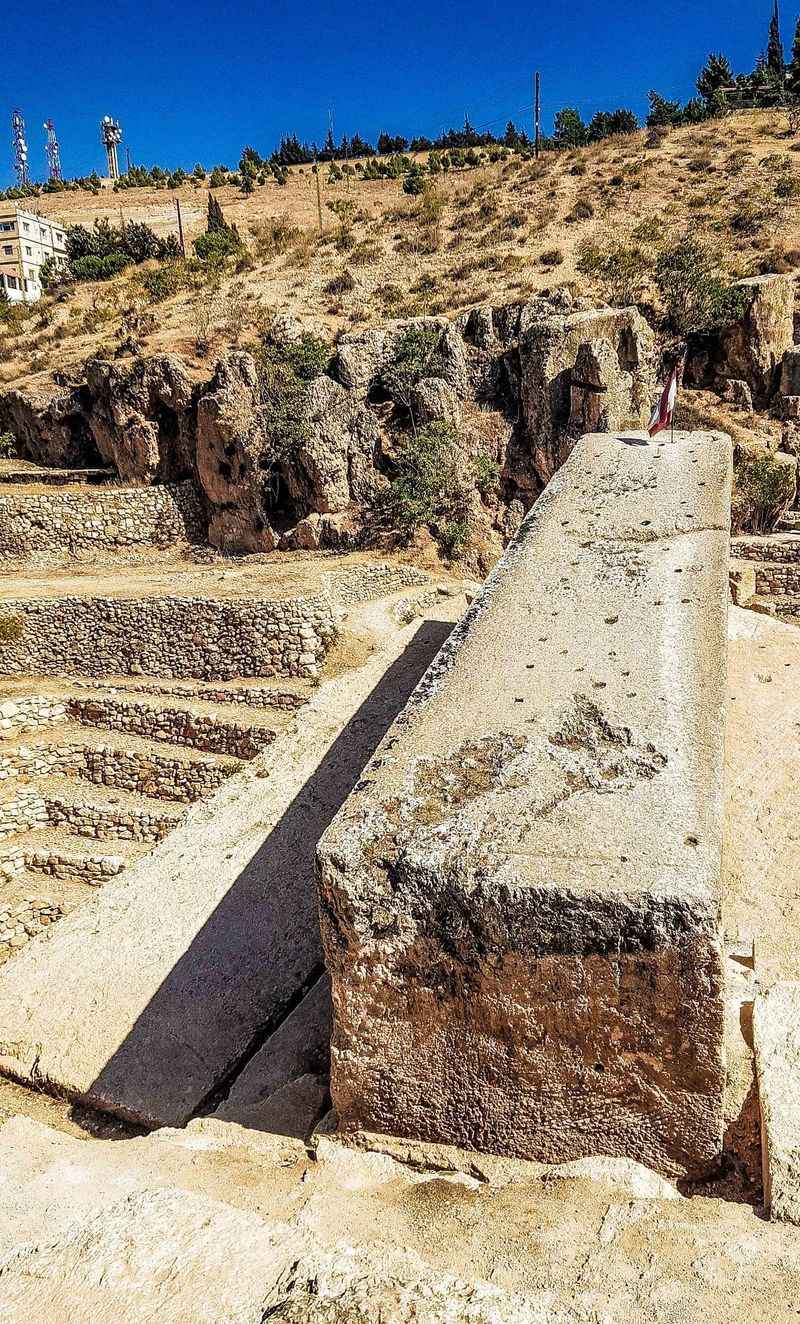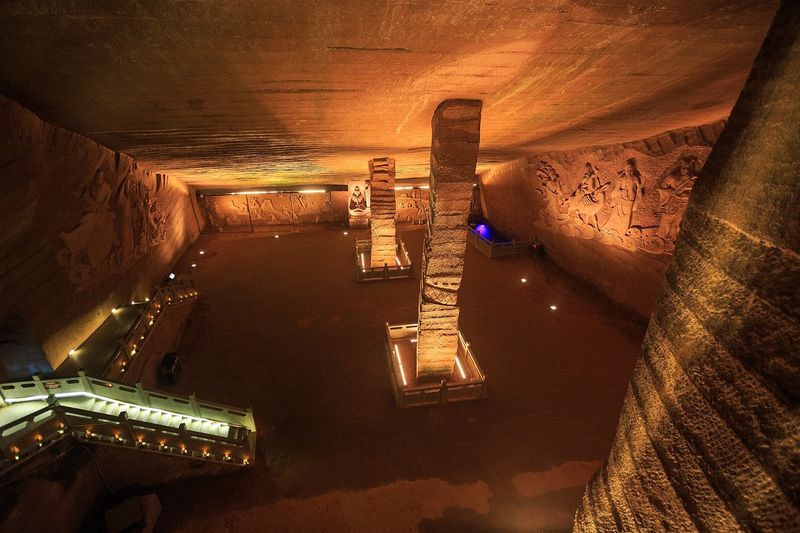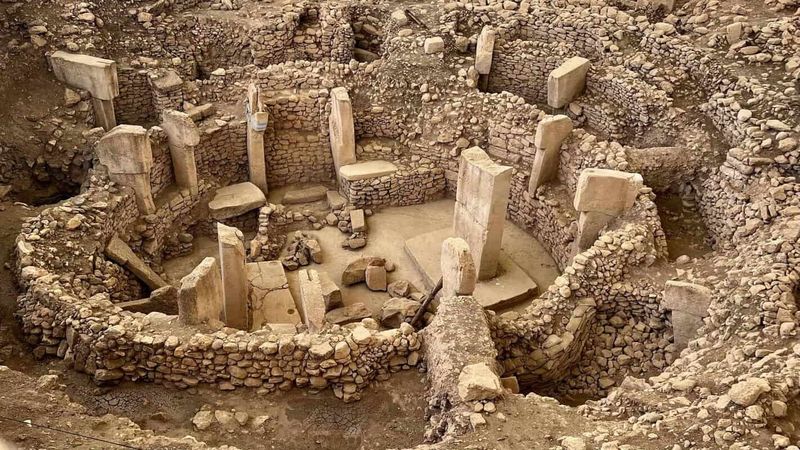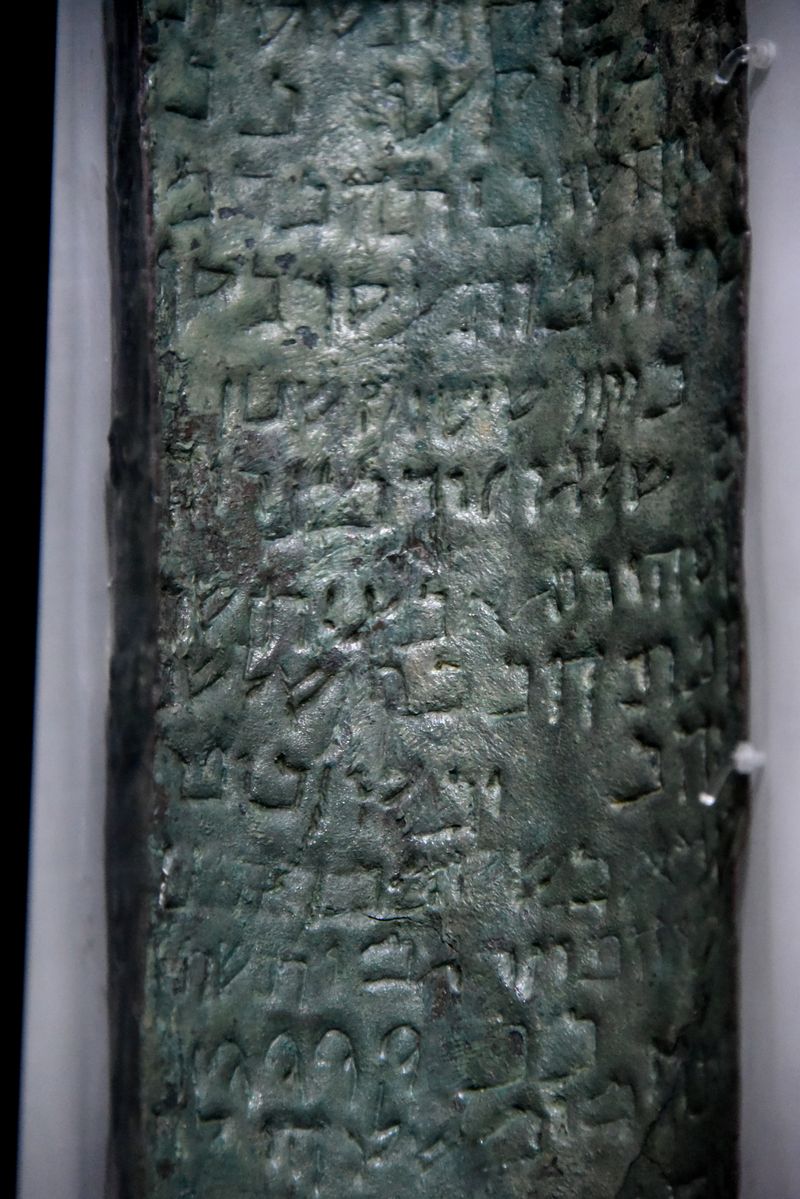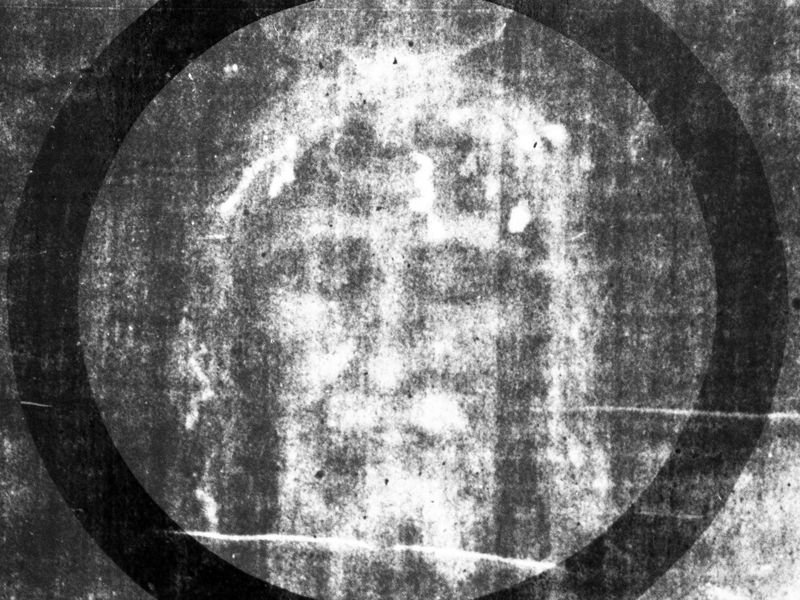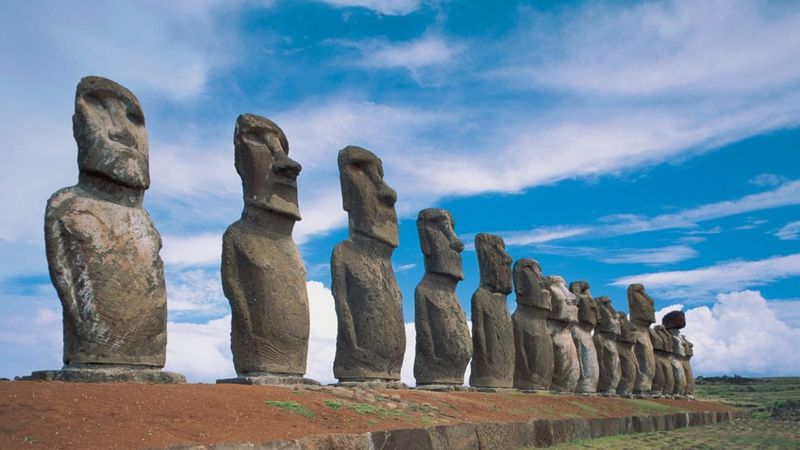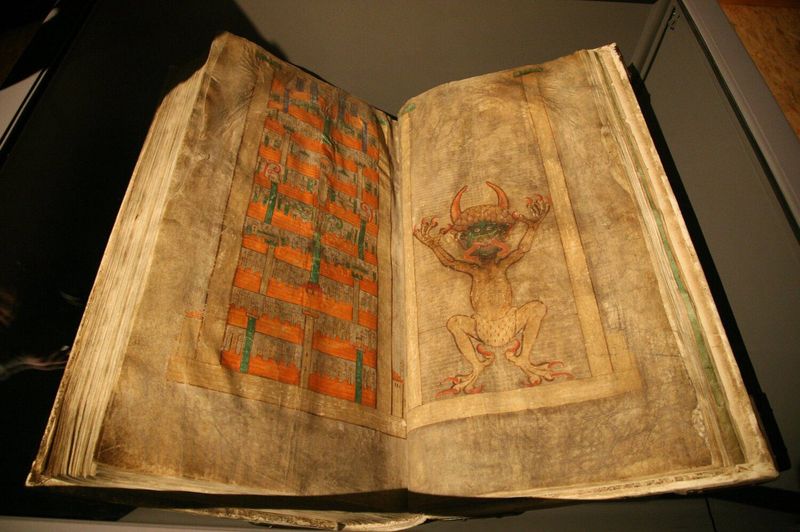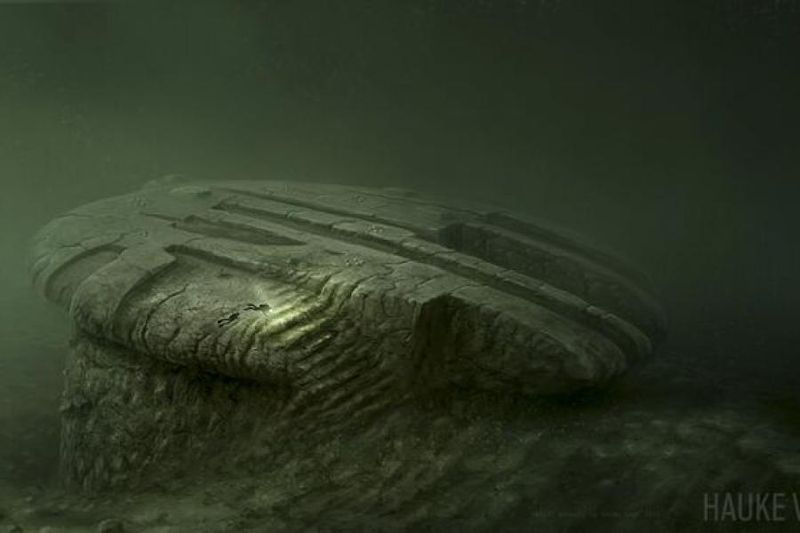Explore the rich tapestry of human innovation and mystery as we juxtapose 11 famous modern inventions with 19 ancient enigmas. From technologies thought to be modern to age-old secrets yet to be unraveled, this compilation invites you to reconsider the achievements of our ancestors and the mysteries they left behind. Discover how ancient civilizations were far more advanced than commonly believed and ponder the secrets that continue to baffle historians and archaeologists alike.
1. Batteries (1800s?) → The Baghdad Battery (2000+ Years Old)
What You Thought: Alessandro Volta invented the battery in 1800. Ancient Truth: The Baghdad Battery, from the Parthian era around 250 BC to 224 AD, could generate an electric charge. Its purpose remains debated, with theories suggesting it was used for electroplating or as a religious artifact. Imagine a time when such technology hinted at unknown capabilities or lost ancient knowledge. The Baghdad Battery challenges our understanding of ancient technological prowess, leaving many questions still unanswered. Was electricity harnessed by the ancients in ways we are only beginning to understand?
2. Computers (1940s?) → The Antikythera Mechanism (100+ BC)
What You Thought: The first computer was ENIAC in 1945. Ancient Truth: The Antikythera Mechanism, discovered in a shipwreck off the Greek island, dates back to around 100 BC. Used to calculate astronomical positions, it featured intricate gears and dials. This ancient analog computer was 1,500 years ahead of its time, showcasing a level of sophistication unexpected for its era. How did ancient Greeks achieve such precision? The mechanism remains a testament to their intellectual and engineering genius, prompting further exploration of ancient technologies. Its complexity continues to inspire awe and curiosity.
3. Central Heating (19th Century?) → Roman Hypocausts (200 BC–400 AD)
What You Thought: Central heating was a Victorian-era luxury. Ancient Truth: The Romans developed hypocaust systems to heat buildings, including baths and villas, from 200 BC to 400 AD. These systems circulated hot air beneath floors and within walls, providing efficient heating solutions far in advance of their time. The ingenuity of Roman engineering is evident in these early central heating systems, which reflect an understanding of thermal dynamics that would not be seen again for centuries. Imagine ancient Rome, where technology met comfort, in a world that embraced innovation.
4. Plastic Surgery (WWI Era?) → Ancient Indian Rhinoplasty (600 BC)
What You Thought: Modern plastic surgery began with war injuries. Ancient Truth: The practice of rhinoplasty dates back to ancient India, around 600 BC, as detailed in the Sushruta Samhita. This ancient text outlines surgical techniques for reconstructing noses, showcasing advanced medical knowledge. Sushruta’s work laid the foundations for modern plastic surgery, highlighting the profound understanding of anatomy and surgical procedures achieved by Indian scholars. With a rich history of innovation, ancient India contributed significantly to the development of medical science, long before it became a recognized field in the modern era.
5. Neurosurgery (1800s?) → Trepanation (7000+ Years Ago)
What You Thought: Brain surgery is a recent medical marvel. Ancient Truth: Trepanation, one of the oldest known surgical procedures, involved drilling holes into the skull. Evidence of this practice dates back over 7000 years, with numerous Neolithic skulls found bearing trepanation marks. Whether performed for medical or spiritual reasons, this procedure showcased a rudimentary understanding of anatomy and surgical intervention. The survival of patients suggests a surprising level of skill and care in these ancient communities. What motivated such an invasive procedure, and what does it reveal about ancient beliefs and medical practices?
6. Vending Machines (1880s?) → Hero of Alexandria’s Holy Water Dispenser (1st Century AD)
What You Thought: The first vending machine sold postcards in London. Ancient Truth: In the 1st century AD, Hero of Alexandria, a Greek engineer, invented a coin-operated machine to dispense holy water. This early vending machine demonstrated mechanical ingenuity and an understanding of automation far ahead of its time. By dropping a coin into the slot, customers received a measured amount of holy water, illustrating an early form of commerce and technology. Hero’s invention remains a fascinating example of ancient creativity and engineering, offering insight into the technological capabilities of the ancient world.
7. Concrete (19th Century?) → Roman Concrete (200 BC–476 AD)
What You Thought: Portland cement was invented in 1824. Ancient Truth: Roman concrete, used from 200 BC to 476 AD, is renowned for its durability and strength, exemplified by structures like the Pantheon. Unlike modern concrete, Roman concrete incorporated volcanic ash, which contributed to its longevity. The secrets of its composition and resilience continue to intrigue scientists and architects today, offering potential insights into more sustainable construction methods. Roman ingenuity in materials science set a standard for architectural excellence, leaving a lasting legacy that continues to inspire modern engineering and construction practices.
8. Automatic Doors (1950s?) → Heron’s Pneumatic Temple Doors (1st Century AD)
What You Thought: Automatic doors debuted in supermarkets. Ancient Truth: Hero of Alexandria, the ingenious inventor, designed pneumatic temple doors that opened using fire-heated air pressure. These automatic doors showcased the application of pneumatics and thermodynamics in the ancient world, illustrating a level of technological sophistication that rivaled modern innovations. Imagine temple doors that opened seemingly by magic—a testament to Hero’s creativity and understanding of natural forces. This early automation highlights the advanced engineering skills of ancient societies, blurring the lines between science and spectacle.
9. Earthquake Detectors (19th Century?) → Zhang Heng’s Seismoscope (132 AD)
What You Thought: The first seismograph was invented in 1841. Ancient Truth: In 132 AD, Chinese inventor Zhang Heng created the first known seismoscope. This bronze instrument could detect earthquakes from hundreds of miles away, using a system of levers and balls to indicate the direction of seismic activity. Zhang Heng’s invention demonstrated an advanced understanding of earth sciences and mechanical engineering. The seismoscope’s accuracy and innovation continue to captivate historians and scientists alike, reflecting ancient China’s contributions to scientific discovery and our ongoing quest to understand natural phenomena.
10. Steel (Industrial Revolution?) → Wootz Steel (300 BC–500 AD, India)
What You Thought: Mass steel production began in the 1850s. Ancient Truth: Wootz steel, produced in ancient India between 300 BC and 500 AD, was renowned for its exceptional strength and durability. This high-quality steel was used to create Damascus blades, which were prized for their sharpness and resilience. The techniques for producing wootz steel were lost over time, adding to its mystique. The craftsmanship and metallurgical knowledge of ancient Indian smiths set a standard for excellence and innovation that influenced subsequent generations. These legendary blades continue to capture the imagination with tales of their magical properties.
11. Robots (20th Century?) → Da Vinci’s Mechanical Knight (1495) & Ancient Automata
What You Thought: Robots emerged in the 1920s. Ancient Truth: Leonardo da Vinci designed a programmable mechanical knight in 1495, an early example of robotics. Additionally, ancient Greeks constructed automata, such as the animated statues in the Theater of Dionysus. These early robots showcased creativity and mechanical innovation that transcended their time. Da Vinci’s knight, capable of movement through a complex system of pulleys and gears, exemplified the blending of art and science. Greek automata, serving both educational and entertainment purposes, reveal a fascination with life-like machines that continues today.
12. The Voynich Manuscript (15th Century)
A book written in an unbreakable code with bizarre plants and naked women bathing in green liquid. The Voynich Manuscript, discovered in 1912, remains one of the most enigmatic texts ever found. Its pages are filled with cryptic script and perplexing illustrations, defying translation and sparking numerous theories. Some suggest it is a medical or botanical text, while others propose it holds hidden knowledge. The manuscript continues to confound linguists and historians, embodying the allure of the unknown. Its origins and purpose remain a mystery, captivating those who attempt to unravel its secrets.
13. The Nazca Lines (200 BC–500 AD, Peru)
Giant desert geoglyphs visible only from the air—how and why were they made? The Nazca Lines stretch across the arid plains of southern Peru, forming intricate patterns and shapes, including animals and geometric figures. These massive works of art, etched into the earth, have puzzled researchers for decades. Theories range from astronomical calendars to religious rituals, yet their true purpose remains elusive. The Nazca culture’s ability to create such enduring and precise lines without aerial perspective raises questions about their technological and artistic capabilities. These enigmatic designs continue to inspire awe and wonder.
14. The Great Pyramid’s Hidden Chambers (2560 BC, Egypt)
Recent scans reveal voids inside—could undiscovered rooms still exist? The Great Pyramid of Giza, a marvel of ancient engineering, continues to intrigue with its architectural mysteries. Advanced scanning technologies have uncovered hidden voids, suggesting the possibility of additional chambers within. The purpose and contents of these voids remain unknown, fueling speculation and excitement. This iconic symbol of Egypt’s grandeur stands testament to the ingenuity and ambition of the pharaohs. As archaeologists explore these hidden spaces, they hope to uncover more about the pyramid’s construction and the secrets it may still hold.
15. The Piri Reis Map (1513)
Shows Antarctica without ice—centuries before its official discovery. The Piri Reis Map, created by the Ottoman admiral and cartographer Piri Reis, has intrigued historians with its depiction of the world as it was known in the early 16th century. What astonishes scholars is its detailed rendering of the coastlines of South America and Antarctica. Some speculate that the map was based on ancient sources now lost. Its accuracy, particularly concerning regions unexplored during its time, raises questions about the extent of early exploration and cartographic knowledge. The map remains a subject of debate and fascination.
16. The Sacsayhuamán Walls (15th Century, Peru)
Precision-cut megaliths fit so tightly that not even a razor blade fits between them. The Sacsayhuamán walls, overlooking the city of Cusco in Peru, demonstrate the engineering prowess of the Inca civilization. These massive stones were cut and placed with such precision that they interlock without the use of mortar. The methods used to shape and transport these stones remain a mystery, prompting admiration and curiosity. The walls are a testament to the Inca’s architectural and engineering skills, reflecting their sophisticated understanding of construction techniques. The exact purpose of Sacsayhuamán continues to intrigue researchers.
17. The Dendera Light (50 BC, Egypt)
A temple carving that looks eerily like a light bulb—was ancient electricity real? Located in the Hathor Temple at Dendera, Egypt, this intriguing relief has sparked debates about the technological capabilities of ancient Egyptians. Some interpret the carving as depicting a large electric lamp, suggesting they might have possessed knowledge of electricity. Others argue it’s a symbolic representation. The relief continues to fuel speculation about the extent of ancient technological achievements. Whether symbolic or literal, the Dendera Light offers insight into the cultural and scientific understanding of the ancient world.
18. The Stone Spheres of Costa Rica (300–1500 AD)
Perfectly round granite balls, some weighing 16 tons—how were they shaped? These enigmatic stone spheres, found scattered across the Diquis Delta in Costa Rica, have puzzled archaeologists for decades. Their purpose and method of creation remain unknown. Some believe they were used for astronomical purposes or as status symbols. The precision with which these spheres were carved continues to inspire wonder, as it challenges our understanding of pre-Columbian stonework. The spheres are a testament to the craftsmanship and creativity of the ancient Diquis culture, whose legacy endures through these remarkable structures.
19. The Dropa Stones (12,000 Years Old?, China)
Alien conspiracy? Tiny discs with hieroglyphs allegedly describing crashed UFOs. The Dropa Stones, discovered in the mountains of Baian-Kara-Ula on the China-Tibet border, have fueled wild theories about ancient extraterrestrial contact. These stone discs supposedly contain inscriptions recounting the crash landing of an alien spacecraft. While mainstream archaeology dismisses these claims, the stones continue to fascinate conspiracy enthusiasts and UFO researchers. Whether a genuine artifact or an elaborate hoax, the Dropa Stones capture the imagination, representing the intersection of archaeology and the enduring human fascination with the unknown.
20. The Baalbek Megaliths (Roman Era, Lebanon)
The “Stone of the Pregnant Woman” weighs 1,650 tons—how was it moved? The massive megaliths of Baalbek, located in modern-day Lebanon, are a marvel of ancient construction. Their sheer size and weight have led to endless speculation about the methods used to transport and position them. Some suggest the involvement of advanced technologies or lost knowledge. These colossal stones are part of the Temple of Jupiter, reflecting the grandeur and ambition of Roman architecture. The mysteries surrounding their construction continue to puzzle historians and engineers alike, inviting further exploration into the ancient world’s engineering feats.
21. The Longyou Caves (200 BC, China)
Hand-carved caverns spanning 30,000 sq. meters—who built them, and why? Discovered in the 1990s, the Longyou Caves in Zhejiang Province, China, defy explanation. These massive underground chambers were meticulously carved out of sandstone over 2,000 years ago. Their purpose remains unknown, as they contain no artifacts or inscriptions to suggest their use. The precision and effort involved in their construction challenge our understanding of ancient Chinese engineering. The Longyou Caves stand as a silent testament to human ingenuity and the mysteries of history, inviting speculation about their creators and their original purpose.
22. The Gobekli Tepe (9600 BC, Turkey)
A 12,000-year-old temple predating agriculture—why did hunter-gatherers build it? Gobekli Tepe, located in southeastern Turkey, is the world’s oldest known temple complex. Its massive stone pillars, adorned with intricate carvings, offer a glimpse into the spiritual life of prehistoric communities. The site’s construction challenges the conventional timeline of human development, suggesting that complex societies existed far earlier than previously thought. The motivations behind its construction remain a mystery, as does the identity of its builders. Gobekli Tepe continues to reshape our understanding of early human history and the origins of civilization.
23. The Copper Scroll Treasure (70 AD, Dead Sea Scrolls)
Lists vast hidden gold and silver—has anyone found it? Among the Dead Sea Scrolls, the Copper Scroll stands out for its detailed descriptions of hidden treasure locations. Written in Hebrew and engraved on copper, it lists 64 sites where valuable artifacts and metals were supposedly buried. Despite numerous expeditions, the treasure has never been found, leading to speculation about its authenticity and the possibility of undiscovered riches. The Copper Scroll adds an element of adventure and mystery to the study of ancient texts, enticing treasure hunters and historians alike with the promise of untold wealth and secrets.
24. The Roman Dodecahedrons (100–300 AD)
Mysterious bronze objects—were they tools, toys, or religious artifacts? The Roman dodecahedrons, small geometric objects found throughout Europe, have puzzled archaeologists for centuries. Their exact purpose remains unknown, with theories ranging from measuring devices to knitting tools. Made of bronze or stone, these dodecahedrons often feature twelve flat faces and circular holes. Their enigmatic design continues to intrigue those who study them, as they offer insight into the daily life and cultural practices of the Roman Empire. While their true function may never be fully understood, they stand as a reminder of the mysteries of ancient history.
25. The Shroud of Turin (Middle Ages?)
Does this cloth really show Jesus’ face, or is it a medieval forgery? The Shroud of Turin, a linen cloth bearing the image of a crucified man, has long been associated with Jesus Christ. Radiocarbon dating suggests a medieval origin, yet debate continues over its authenticity. Some believe it is the burial shroud of Jesus, while others argue it is an elaborate hoax. The shroud’s mysterious image formation and its religious significance continue to inspire fascination and devotion. As investigations and controversies persist, the Shroud of Turin remains a symbol of faith and mystery.
26. The Moai of Easter Island (1250–1500 AD)
How were these giant statues transported across the island? The Moai statues of Easter Island, with their massive stone heads, are iconic symbols of ancient mystery. Carved by the Rapa Nui people, these statues were transported from quarries to their current locations using methods that remain a subject of debate. Theories suggest the use of wooden sleds or rolling logs, but the exact technique is still unknown. The Moai stand as a testament to the ingenuity and resourcefulness of their creators, reflecting the cultural and spiritual life of the Rapa Nui. Their presence continues to intrigue and amaze.
27. The Georgia Guidestones (1979, USA)
A modern mystery—who erected this granite monument with apocalyptic instructions? The Georgia Guidestones, erected in 1979 in Elbert County, Georgia, bear inscriptions in multiple languages. These inscriptions offer guidance for rebuilding civilization after an apocalypse, sparking conspiracy theories and speculation. The identity of the builders remains unknown, adding to the monument’s enigma. Often referred to as “America’s Stonehenge,” the Guidestones attract visitors and curiosity-seekers from around the world. Their mysterious messages and origins continue to provoke debate and intrigue, making them a unique addition to the list of human-made mysteries.
28. The Devil’s Bible (13th Century, Sweden)
A massive medieval book with a full-page devil portrait—why was it made? The Devil’s Bible, or Codex Gigas, is a 13th-century manuscript known for its enormous size and the striking illustration of the devil. Legend claims it was created in a single night by a monk who made a pact with Satan. The Codex contains the Old and New Testaments, various other texts, and its infamous illustration. Its creation and purpose remain shrouded in myth and mystery, as does its history. The Devil’s Bible continues to fascinate scholars and the public alike with its dark allure and enigmatic origins.
29. The Baltic Sea Anomaly (2011, Discovered)
A sonar-detected UFO-like object—natural formation or ancient relic? Discovered in 2011 by Swedish treasure hunters, the Baltic Sea Anomaly is a mysterious underwater object resembling a crashed spacecraft. Its unusual shape and features have led to speculation about its origins, with theories ranging from a natural geological formation to a submerged relic of an advanced civilization. The anomaly’s enigmatic nature and uncharted location add to its intrigue, drawing interest from scientists, researchers, and UFO enthusiasts. As investigations continue, the Baltic Sea Anomaly serves as a reminder of the unexplored mysteries in our oceans.


